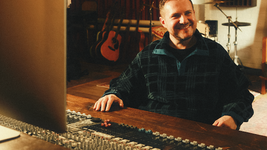'Cy Twombly: Sculpture' Review - Gagosian Sculpture
- Miranda Yates
- Oct 6, 2019
- 3 min read
September 30–December 21, 2019
FREE Entry
The entrance into Cy Twombly’s exhibition at the Gagosian seemed reminiscent of a graveyard. Structures of varying sizes all displayed as one unit, with the audience walking up and down the aisles of gallery space to pay their respects towards each exhibit. This seemed quite apt, considering the quote included in the exhibition pamphlet by Twombly himself—“I would like to think in the sculptures there is a tendency towards the fundamental principle in Homer’s world. That poetry belongs to the defeated and to the dead.” This thought, that within each piece there is an underlying poetry, an underlying history, to be uncovered, elucidates the potential within each sculpture.

Cy Twombly, Untitled, 2004. Courtesy of Gagosian - © Cy Twombly Foundation
Walking into the first room, I felt a sense of dormancy, perhaps even stagnation. I saw mostly white, tottering pieces, in an even more brilliantly-white cavernous space of the Gagosian. My eyes were drawn immediately to the only splash of colour and vibrancy in the room, from ‘Turkish Delight’ (2000). This sturdy green, almost stoic piece, is initially mistaken for the most energetic piece in the room. The rest seemed a little too mellow, melting into the whitewashed walls, blurring into each other. Yet looking at ‘Humul’ (1986), a bronze structure coated sloppily yet also thoroughly in white oil-based paint, immediately opened my eyes to the layers beneath it. The stagnancy on the surface didn’t reflect the energy these pieces seemed to contain within, as though ‘Humul’ was a grave or a memorial to some great escapade. This use of contemporary art by Twombly does not stray from tradition or history, but instead converses with the past, and express this in contemporary forms for a modern time. He further highlights his thoughts on the Homerian principles of poetry in the dead and defeated—there is a rich history, a vibrant energy in both.
Twombly’s fascination with the classical world is evident in many of his pieces. Firstly, there is the tumultuous wooden sculpture, painted pink, entitled ‘Batrachomyomachia’ (1998), which references a Greek epic that parodies the Iliad. There is also an untitled piece including a wooden doorstop, with ‘AOEDE’ scrawled in pencil, which is another nod to the classical world, and the daughter of Zeus. This reference to the muse of voice and song, in a sculpture seemingly so cobbled together and washed over in paint, again overflows with the idea that there are voices within the piece, words to be heard in your head as you look at it, ideas for the viewer to tease out. I suppose the abstract nature of Twombly’s sculptures fosters that potential, to garner from the piece whatever the viewer wishes. Whilst the classical references throughout may be seen as somewhat exclusionary, making the exhibition less accessible to those unfamiliar with Greek or Homerian histories and ideals, I do not think it truly bars anyone from seeking meaning or emotion within a piece. That to me seems the beauty of the abstract, the boundless room for interpretation and personal connection.

Cy Twombly, Untitled, 2002. Courtesy of Gagosian - © Cy Twombly Foundation
As a unit, looking at all the pieces together from the corner of the room, there is certainly a sense of the uncomfortable and foreboding, with many sculptures, including ‘Untitled (Humpty Dumpty)’ (2004), and ‘Untitled (St. Sebastian)’(1998), comprising of piled up materials, precarious and yet with no sense of movement or toppling over. As is the style of Twombly, many are washed over in white paint, covering up the cracks and gaps and base materials or objects used. This gives an obvious uniformity to the artworks, and also a neutrality—a tabula rasa for the onlooker to project what they wish upon it, making the exhibition far more accessible and rich in potential than I first gave it credit for.
Edited by Charlee—Jane Kieser, Deputy Digital Editor





















































Comments